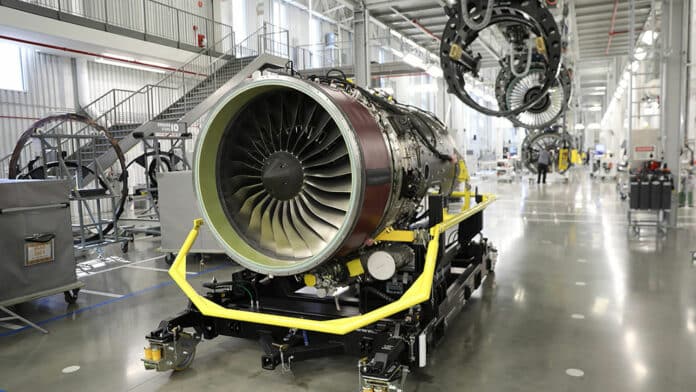RTX’s Pratt & Whitney Canada, the Canadian division of Pratt & Whitney, and Gulfstream Aerospace Corporation announced the successful completion of the first transatlantic flight using sustainable aviation fuel (SAF).
The flight was carried out by a Gulfstream G600 business jet powered by PW800 series engines, which were specially designed to operate on SAF. The purpose of the flight was to effectively demonstrate both engine and aircraft functionality in a fully operational setting to support future specifications for 100% SAF.
This initiative is expected to play a vital role in achieving a more sustainable future of net-zero CO2 emissions for aviation in the next few decades, which will be a more environmentally friendly future.
On November 19, a Gulfstream G600 jet flew from Savannah, Georgia, to Farnborough, United Kingdom, with a pair of PW815GA engines. Both aircraft engines were powered by 100% Hydro-processed Esters and Fatty Acids (neat HEFA), which have at least 70% lower lifecycle CO2 emissions than fossil-based jet fuel. The SAF used on the flight was produced by World Energy and delivered by World Fuel Services.
“The performance of the aircraft on the first transatlantic flight using 100% SAF showcases our commitment to leading the industry in sustainability innovation through new aircraft and propulsion technologies while promoting environmentally responsible practices,” said Mark Burns, president of Gulfstream.
Gulfstream has been working with Pratt & Whitney Canada for over a decade. Their G600 business jet entered service in 2019 and is powered by twin PW815GA engines from the Canadian firm. Its PW800 engine family is a popular choice for business jets, having flown for more than 330,000 hours.
“Collaborating with airframe manufacturers such as Gulfstream is an important part of our long-standing efforts to ensure SAF compatibility across all our engines, which have already been certified to operate with up to 50% SAF blends for more than a decade,” said Anthony Rossi, vice president of Sales & Marketing at Pratt & Whitney Canada, in a statement. “Future 100% SAF operational approval will add to the versatility, reliability, and fuel efficiency of the PW815GA engine to benefit Gulfstream and our customers.”
Shifting to 100% SAF fuel could greatly enhance the sustainability of aviation by reducing carbon emissions. In addition to SAF, the industry is also exploring solutions involving hydrogen, which has a high energy content, is easily combustible, and does not contain carbon. While hydrogen fuel has the potential to enable zero-emissions flight, it also poses significant challenges.
SAF is a type of fuel that does not rely on fossil sources, unlike Jet A Kerosene, which is commonly used by aircrafts. Aircraft operators can significantly reduce their carbon impact since SAF is produced from sustainable feedstocks like plant oils, leftover cooking oil, and municipal garbage. SAF comes in various forms and has the potential to save up to 80% of carbon emissions over its lifetime compared to traditional jet fuel.
In recent times, several companies have started using SAF to promote eco-friendly air travel. For example, in December of last year, Rolls-Royce and Gulfstream Aerospace tested a business jet that runs entirely on SAF, marking a significant milestone for the aviation industry’s transition towards sustainable fuels. Also, Embraer and Pratt & Whitney successfully tested a GTF-powered E195-E2 aircraft on 100% sustainable aviation fuel (SAF).
Earlier this year, Emirates operated its first milestone demonstration flight on a Boeing 777-300ER, powering one of its engines with 100% SAF.
